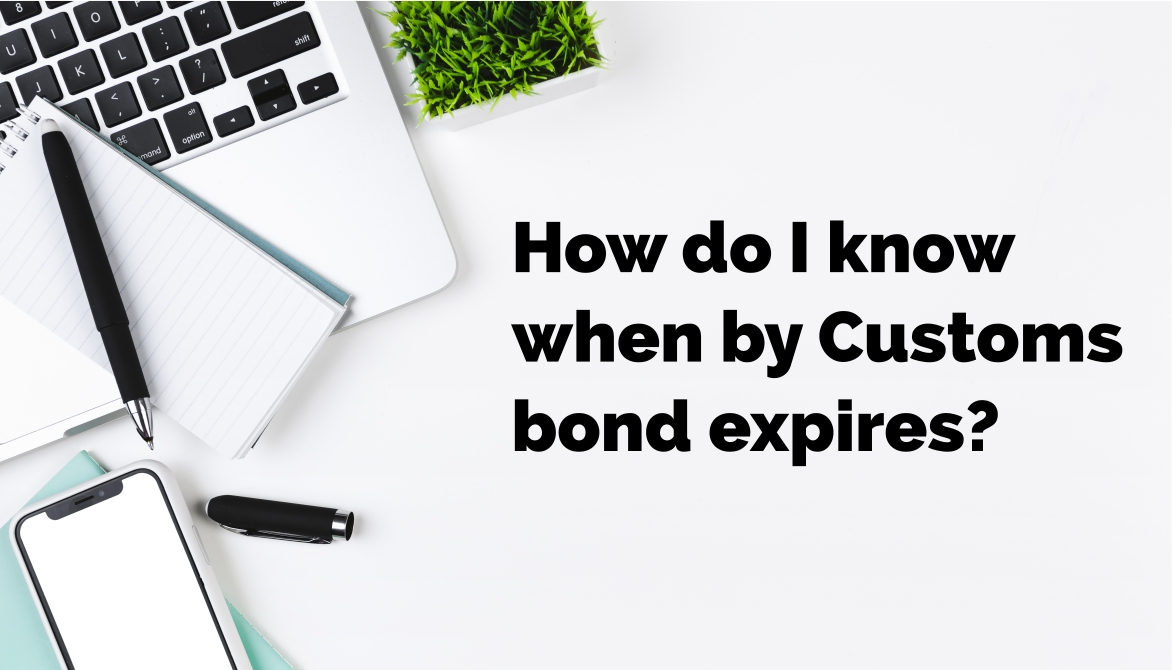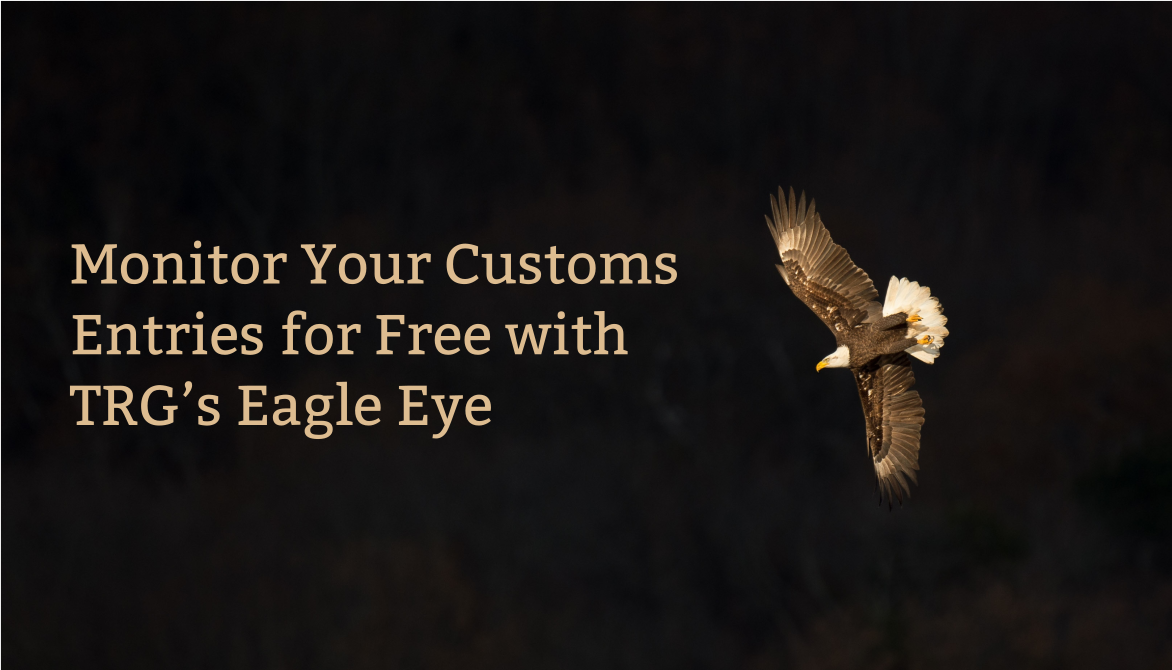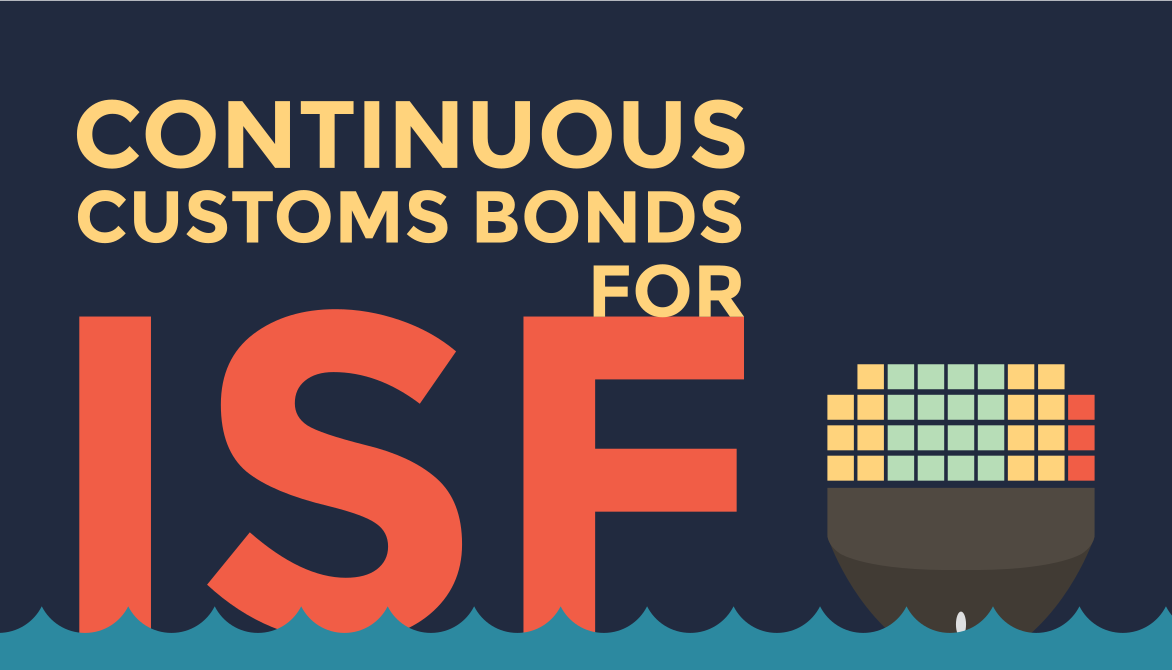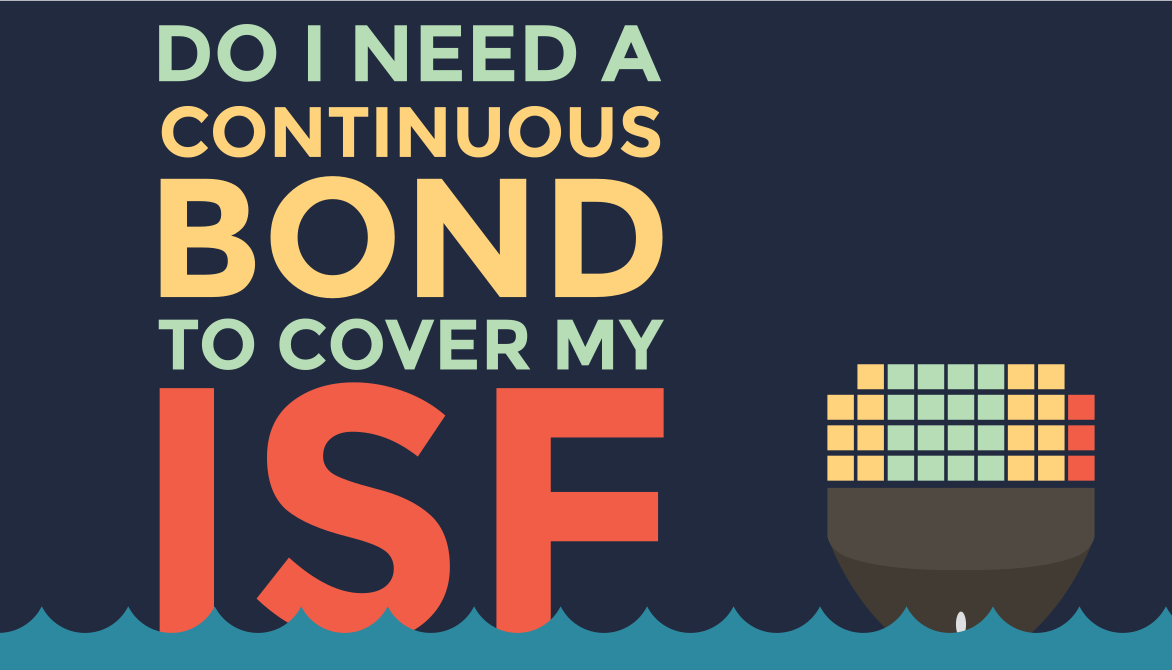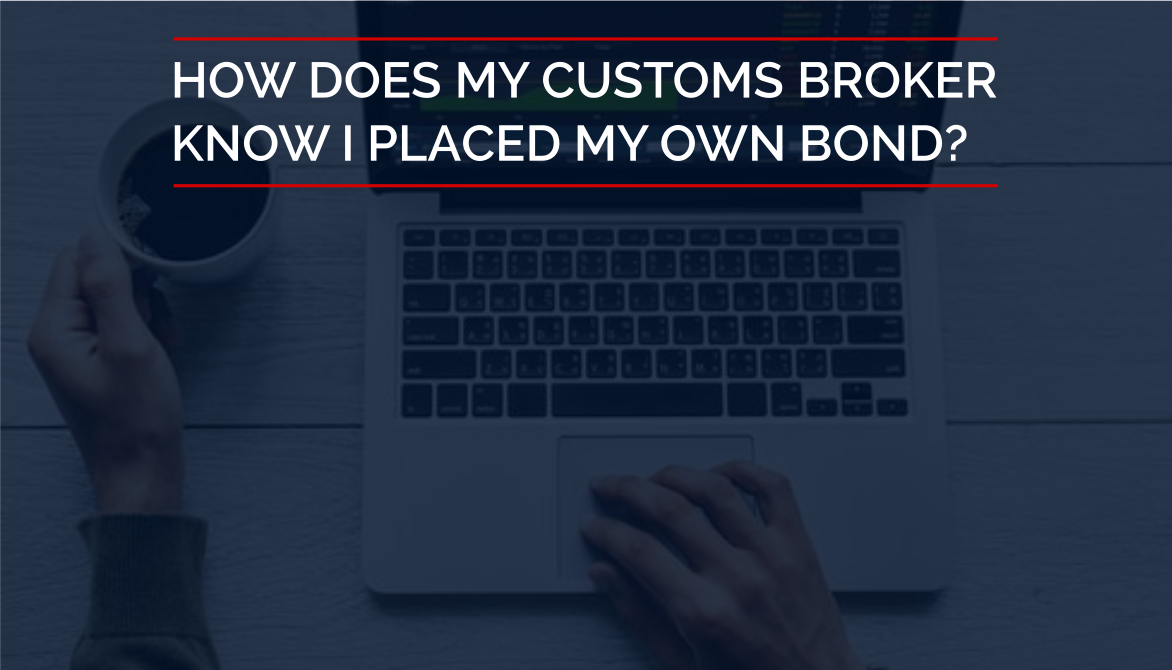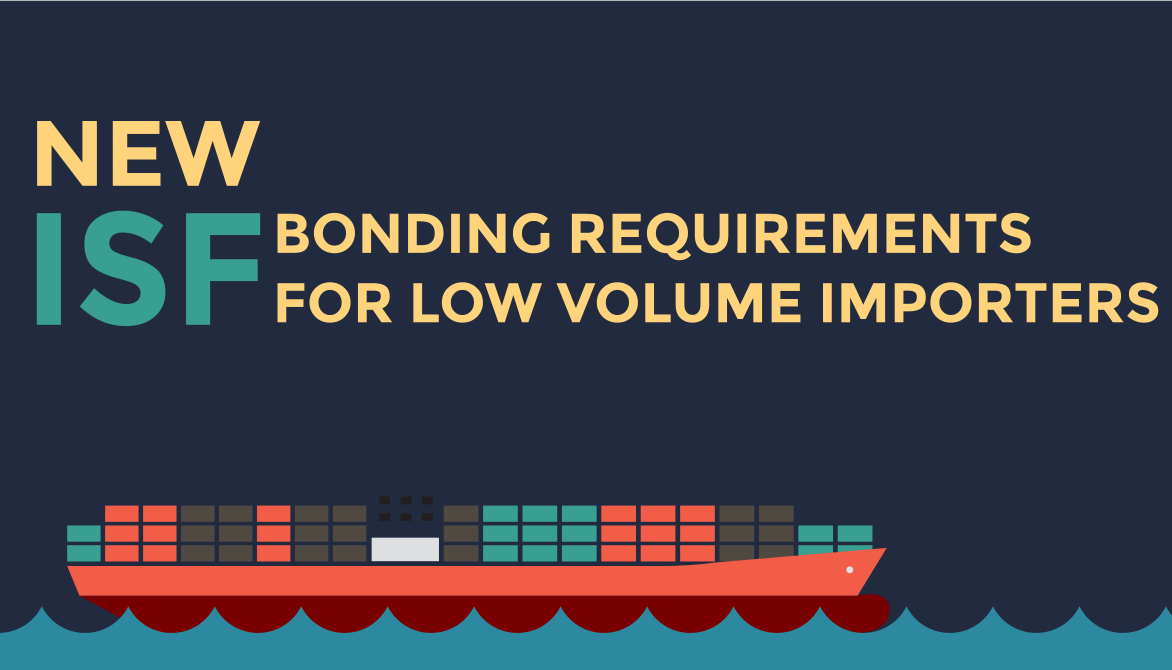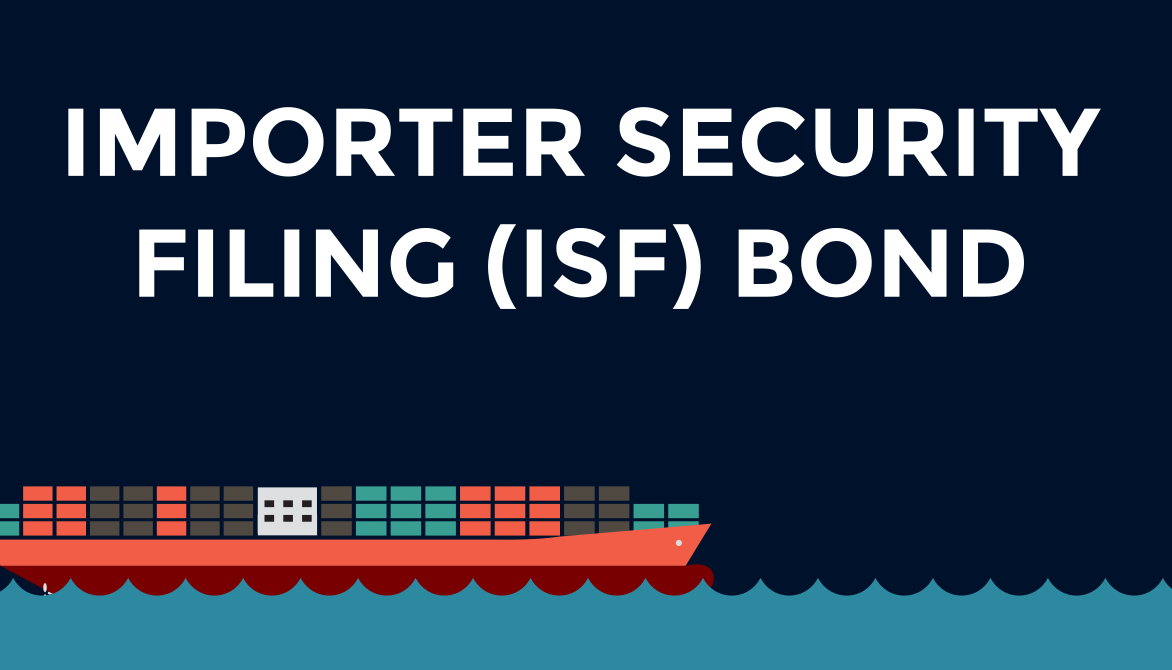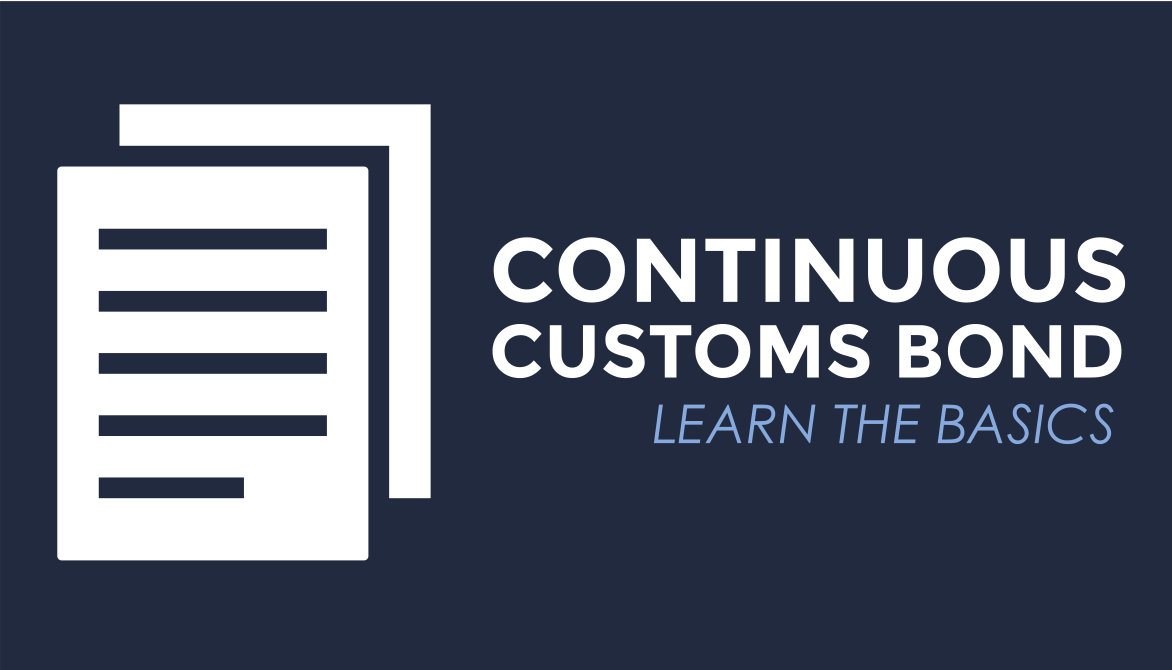A continuous Customs bond remains on file until the surety or broker puts in a termination notice with U.S. Customs. Did you know you can access your bond information, liquidated damages, supplemental duties at any time using Eagle Eye?
Customs Compliance
Looking for something specific?
Search our entire database to find the answers you seek. If you can't find an existing post, reach out and let us know!
Follow Us!
What if I purchase the continuous bond with a multiple year option and your company goes out of business?
What happens if a surety goes out of business? Specifically for Customs bond holders?
Monitor Your Customs Entries for Free with TRG’s Eagle Eye
Have you ever wasted time and resources trying to answer one of these important questions?
Do I owe any duties to Customs?
Which entries have not liquidated?
How much duty did I pay last year?
Which of my entries are suspended?
TRG Provides Continuous Customs Bonds for Importer Security Filing
TRG’s Customs bond division has opted to continue to only provide the amended Continuous bonds for Importer Security Filing. Customs and Border Protection allows for ISFs to be secured by single entry or continuous bonds.
Is a Continuous Bond Needed to Cover My ISF?
Purchasing a continuous Customs bond that has been amended to cover ISF is going to be your most economical option. If you will be importing at least two times during the course of 12 months you should apply for this bond no later than 2 weeks prior to you first shipment leaving the foreign port.
How Does My Customs Broker Know I Placed My Own Bond?
How will my broker, or all my brokers, know that I have a new bond?
At your request, TRG will notify your broker(s) of your new continuous bond information including Bond Number, Effective Date, Surety Code, and Importer Number.
New ISF Bonding Requirements for Low Volume Importers
Save the date! TRG is hosting a free webinar to discuss the new bonding requirements for Importer Security Filing.
How Long Does it Take to Place a US Customs Import Bond?
If you currently do not have continuous Customs bond on file and are looking to get one in place you have come to the right place. However, in order to get your bond placed in a timely manor you will need to make sure to fully complete the application so TRG can submit the application to US Customs on your behalf.
Importer Security Filing (ISF) Bond
Do hold one the continuous customs bonds required to file your ISF? Most likely you have in place the bond needed to cover the ISF, unless you are importing using single entry bonds.
Continuous Customs Bond, Learn the Basics
If you currently import using single entry bonds, see what you are paying per single entry bond. It might be in your best interest to get a quote from TRG on a continuous customs surety bond.

